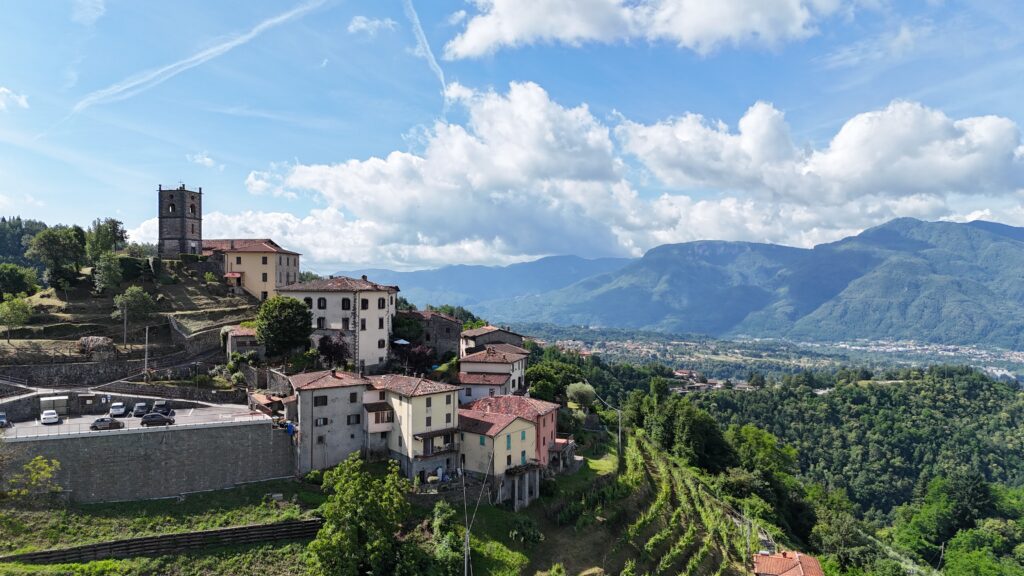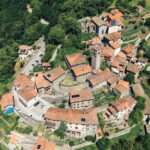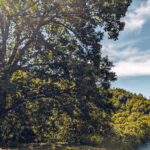There several hypotheses about the origins of the name of Treppignana; one is that the name comes from the surname of a noble Roman family Terpinius; another version has the name connected to the latin word trivius, there roads, as Treppignana is located at the crossroads of and ancient road system.
The Church of S. Martino in Treppignana is mentioned in several Lombard documents prior to the year 1000, even one dating back to 757. The Churches of Treppignana, like those of Riana and Lupinaia, were part of the church system of Loppia. However the ancient church of San Martino mentioned in the Lombard documents was not the one known today; in several documents and pastoral visits there is frequent mention of an ancient Church of San Martino located outside the village (extra villam), , likely where the village cemetery is. Two churches coexisted in Treppignana for a certain period of time.
The current church of San Martino, built later in time, stands on the top of the hill overlooking the town of Treppignana, once occupied by the castle of the village, of which the bell tower was an ancient watchtower. Inside, in addition to a statue of San Martino Vescovo in the high altar, there are some valuable paintings by the famous Garfagnino painter Cavani. The bell tower was built by using a tower of the ancient castle.
The history of the town of Treppignana is common to that of the villages of Riana and Lupinaia.
During the Middle Age and later it went through the alternating fortunes of most of the villages of Garfagnana, being assigned to the control of Lucca, Pisa and Florence.
During the time in which the Este family arrived in Garfagnana, Treppignana (together with the neighboring Lupinaia and Riana) remainder under the Lucca Power, being part of the Vicariate of Gallicano.
The current administrative configuration of the Municipality of Fosciandora dates back to January 1 1856, when Riana, Treppignana and Lupinaia, previously under Gallicano, were aggregated to it.
During the Second World War, the town of Treppignana was in a very delicate spot of the Gothic Line, exposed to clashes and bombings, which caused serious damage to many structures, including the church and the bell tower.
Today Treppignana is home to some agritourism facilities; the view that can be enjoyed from this village is one of the best in the Serchio Valley.







